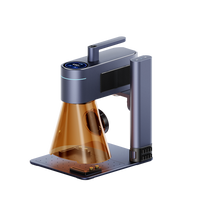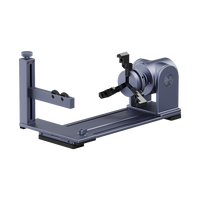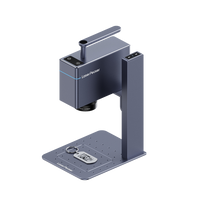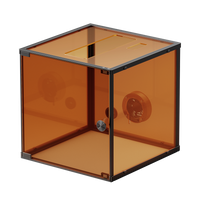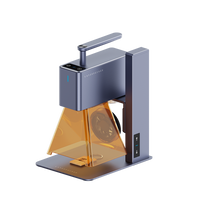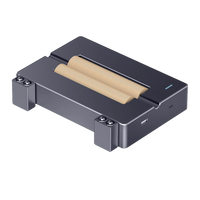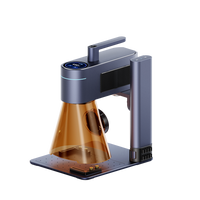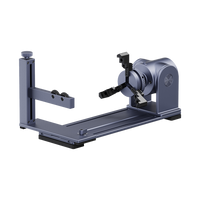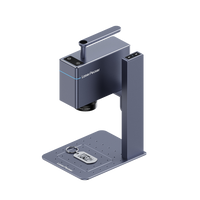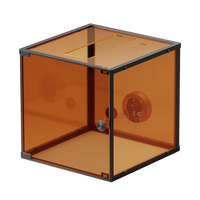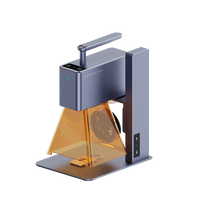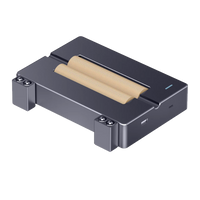Laser-cut puzzles seamlessly merge the precision of modern technology with the timeless joy of solving jigsaw puzzles. Crafted through the intricate art of laser cutting, these puzzles elevate the traditional experience, offering enthusiasts a captivating blend of creativity, design, and meticulous craftsmanship.
From personalized designs to challenging intricacies, laser cut puzzles have become a popular choice for those seeking a unique and engaging form of entertainment. This introduction sets the stage for an exploration into the fascinating world of laser-cut puzzles and the myriad questions surrounding their creation and enjoyment.
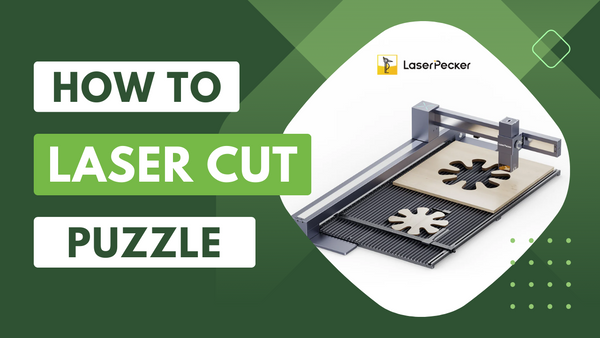
In this article:
Part 1: All About Laser Cut Puzzle
Laser-cut puzzles represent an intriguing fusion of technology, craftsmanship, and entertainment. These puzzles are crafted using precision laser cutting techniques, allowing for intricate and detailed designs that elevate the traditional puzzle-solving experience. Here are some aspects to explore when discussing laser-cut puzzles:
1. Precision and Detail:
Intricate Designs: Laser cutting enables the creation of highly detailed and complex puzzle pieces. The precision of the laser cutter allows for intricate patterns, shapes, and fine details that may be challenging or impossible to achieve with traditional methods.
2. Materials:
Versatility: Laser-cut puzzles can be made from various materials, including wood, acrylic, and MDF (medium-density fiberboard). Each material has its own unique characteristics, affecting the appearance and feel of the puzzle.
3. Customization:
Personalized Designs: Laser cutting allows for customization, making it possible to create puzzles based on personal preferences, themes, or even photographs. This opens up a world of creative possibilities, making laser-cut puzzles excellent as personalized gifts or unique artworks.
4. Challenges and Complexity:
Variable Difficulty Levels: Designers can control the complexity of laser-cut puzzles by adjusting the intricacy of the pieces and the overall design. This versatility caters to both casual puzzle enthusiasts and those seeking more challenging experiences.
5. Educational Value:
Geometric Understanding: Laser-cut puzzles can serve as educational tools, especially for teaching geometry and spatial reasoning. The precise interlocking pieces often follow geometric principles, encouraging problem-solving skills and logical thinking.
6. Craftsmanship:
Attention to Detail: The creation of laser-cut puzzles involves a meticulous process that requires attention to detail in both design and manufacturing. Craftsmanship plays a crucial role in ensuring the pieces fit seamlessly and the final product is visually appealing.
Part 2: How to Laser Cut Puzzle at Home?
Laser cutting puzzles at home can be a rewarding and creative DIY project. Here's a step-by-step guide to help you laser cut a puzzle in your own workspace:
Materials and Tools Needed:
- Laser Cutter: If you don't own one, consider buying a laser cutting machine.
- Design Software: Programs like LaserPecker Design Space are commonly used for vector design.
- Puzzle Material: Choose a suitable material like plywood, MDF, or acrylic. Ensure it's compatible with your laser cutter.
Step-by-Step Process:
Step 1. Design Your Puzzle:
Use design software to create your puzzle pieces. Ensure the pieces have interlocking connectors for a seamless fit. Plan the overall layout of your puzzle. Decide on the size and shape of the final product.
Step 2. Vectorize and Prepare Design:
If you're using an image, vectorize it to create a scalable and editable design. Set different colors for cutting and engraving in your design. Typically, RGB red is used for cutting, and RGB blue is used for engraving.
Step 3. Choose Puzzle Material:
Select a material that suits your design and preferences. Common choices include plywood for a natural look or acrylic for a more modern appearance.
Step 4. Set Up Cutting Parameters:
Consult your laser cutter's manual to determine the appropriate cutting parameters for your chosen material. Parameters include speed, power, and frequency. Perform a test cut on a scrap piece to ensure the settings are correct.
Step 5. Load Material and Calibrate:
Place your chosen material on the laser cutter bed and secure it in place. Calibrate the laser cutter to ensure accurate cutting based on the material's thickness.
Step 6. Upload Design to Laser Cutter Software:
Use the laser cutter's software to upload your vector design. Arrange the pieces on the virtual bed according to your layout.
Step 7. Start Laser Cutting:
Initiate the laser cutting process. The laser cutter will follow the paths defined in your vector design, cutting out the puzzle pieces.
Step 8. Check and Assemble:
Once the cutting is complete, carefully remove the puzzle pieces from the material. Test the fit of the pieces to ensure they interlock correctly. Make any necessary adjustments to the design for a snug fit.
Step 9. (Optional) Finish and Seal:
If desired, apply a finish or sealant to enhance the appearance and durability of the puzzle. This step is particularly relevant for wood-based materials.
Step 10. Share or Enjoy:
Share your laser-cut puzzle with friends and family or enjoy solving it yourself. Consider documenting and sharing your creation on social media or maker communities.
Important Tips:
- Always follow safety guidelines when operating a laser cutter.
- Experiment with scrap material to fine-tune your cutting settings before working on the final piece.
- Keep in mind the limitations of your laser cutter and adjust your design accordingly.
- Explore online resources and communities for additional tips and inspiration.
Part 3: Frequently Asked Questions about Laser Cut Puzzle
1. What is a laser-cut puzzle?
A laser-cut puzzle is a type of jigsaw puzzle crafted using laser cutting technology. The pieces are precisely cut from materials like wood, acrylic, or MDF to create intricate designs and interlocking shapes.
2. How does laser cutting work for puzzles?
Laser cutting uses a focused laser beam to cut through materials. In the context of puzzles, a computer-controlled laser cutter follows a predetermined vector path to cut out individual pieces from a sheet of material.
3. What materials are commonly used for laser-cut puzzles?
Common materials include plywood, MDF (medium-density fiberboard), and acrylic. Each material has its own characteristics, affecting the appearance, feel, and difficulty of the puzzle.
4. Can I create my own designs for a laser-cut puzzle?
Yes, you can design your own puzzle using vector graphic software like Adobe Illustrator, CorelDRAW, or Inkscape. This allows for customization, enabling you to create personalized puzzles with unique shapes and themes.
5. Do I need a laser cutter to make a laser-cut puzzle?
Yes, a laser cutter is necessary to precisely cut the puzzle pieces. If you don't own one, consider using a local maker space or a fabrication service that provides laser cutting services.
6. What makes laser-cut puzzles different from traditional puzzles?
Laser-cut puzzles often feature more intricate and detailed designs due to the precision of the cutting process. The pieces can have complex shapes and interlocking mechanisms, providing a unique and challenging puzzle-solving experience.
7. How do I ensure the pieces fit together correctly?
Designing precise interlocking connectors is crucial. Before cutting the final puzzle, perform test cuts on scrap material to fine-tune your design and ensure a snug fit.
8. Can I create a puzzle from my own photographs or artwork?
Yes, many people use laser-cutting technology to turn personal photographs or artwork into custom puzzles. This adds a personal touch and makes for unique and meaningful gifts.
9. Are laser-cut puzzles environmentally friendly?
It depends on the materials chosen. Opting for eco-friendly materials and mindful manufacturing practices can contribute to a more sustainable puzzle-making process.
10. Are laser-cut puzzles suitable for children?
It depends on the complexity and size of the puzzle. While some laser-cut puzzles are designed for children, others with intricate details and smaller pieces may be more suitable for older individuals.
11. Can I sell laser-cut puzzles that I make at home?
Yes, many individuals and small businesses sell laser-cut puzzles online or at local markets. Ensure you comply with any regulations and safety standards, and consider the legal aspects of selling handcrafted items.
12. Are there safety considerations when using a laser cutter?
Yes, safety is paramount. Always follow the safety guidelines provided by the laser cutter manufacturer. This includes wearing appropriate protective gear, ensuring proper ventilation, and understanding how to operate the machine safely.
Final Thoughts
Laser cutting introduces a new dimension of possibilities. The precision and detail achieved through this technology transform puzzle-solving into an art form, where every piece is a testament to craftsmanship and innovation. Whether creating bespoke puzzles from cherished photographs or indulging in the challenges of intricately cut designs, the journey of crafting and solving laser-cut puzzles is an immersive experience.
As enthusiasts continue to explore the creative potential and share their designs within a vibrant community, the allure of laser-cut puzzles persists, offering both novices and seasoned puzzlers a unique and satisfying way to engage with this time-honored pastime. As we piece together these intricate creations, we discover not just the satisfaction of completion but the joy of connecting craftsmanship with the joy of solving.






